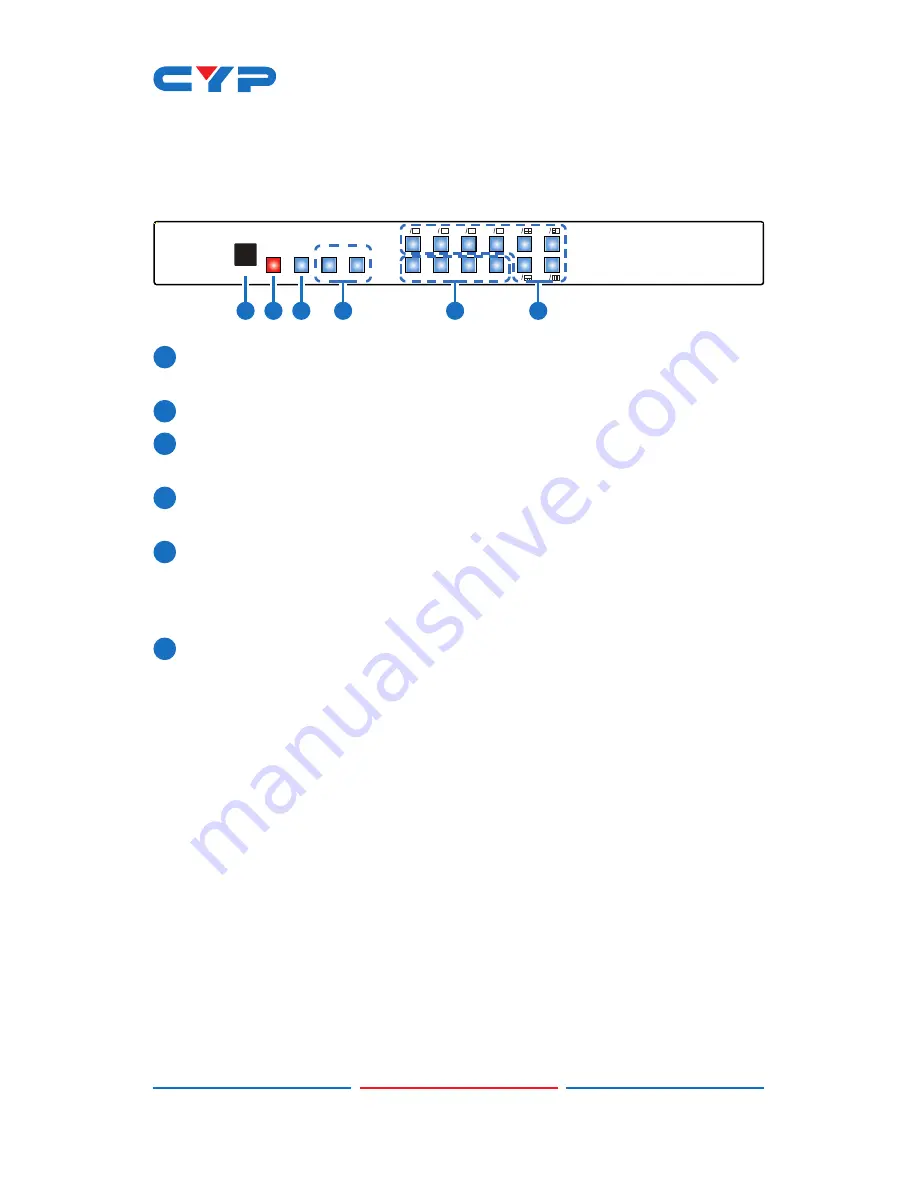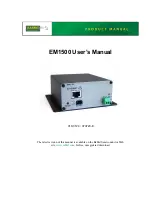
3
6. OPERATION CONTROLS AND FUNCTIONS
6.1 Front Panel
POWER
MENU
-
+
1
CHANNEL
INPUT
2
3
4
4
1
2
3
1
A
WINDOW
2
3
4
1 2
3 4
2 3 4
1
1 2 3 4
B
C
D
E
G
H
F
6
2
1
3
4
5
1
IR WINDOW:
Accepts the IR signal from the supplied remote
control.
2
POWER:
Press to turn the unit on or to put it into standby mode.
3
MENU:
Press this button to bring up the On-screen Display (OSD)
menu on screen.
4
MINUS/PLUS (−/+):
Press these buttons to navigate down/up the
OSD menu.
5
CHANNEL INPUT 1~4:
Press to cycle through the four HDMI sources
to be displayed in the corresponding window. All windows can
display the same input or each channel can display a different
input.
6
WINDOW A~H:
Press these hot keys to select the required screen
configuration. Windows A to D will display the selected channel
in full screen. Windows E to H can simultaneously display a
combination of channels on the same screen.
Windows A to D's source selection corresponds to channel inputs 1
to 4. To change the input channel for window A, press the button
for channel input 1. You will not be able to select the buttons for
channel inputs 2 to 4 when window A is selected. The sizes for
Windows E to H are adjustable through the OSD menu settings.
Note: Only Window G is PIP (Picture-in-Picture) whereas E, F and H
are POP (Picture-out-of-Picture) modes.
The order of priority when windows overlap each other is Channel
4 > Channel 3 > Channel 2 > Channel 1 i.e Channel 4 will cover
Channel 3, Channel 3 will cover Channel 2 and so on.
Note: Under some circumstances the window borders may show
some interference, adjusting the display's motion setting may
resolve this issue.









































